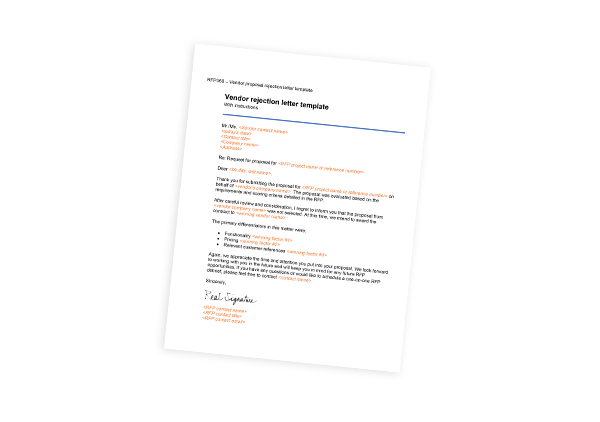RFP rejection letter template
Share the outcome of your RFP.
While you never want to be the bearer of bad news, it’s important to share the outcome of your RFP with the vendors who participated. So, use this RFP rejection letter template to follow up with your vendors.
This vendor proposal rejection letter template lets unsuccessful bidders know that the RFP has been awarded and they can close the project with their team. In addition, it conveys that you appreciate and respect their time — preserving the relationship for future engagements.
This proposal rejection letter template:
- Recaps the RFP opportunity
- Shares the final outcome
- Provides key decision factors
- Offers next steps if needed
Download now to write a clear, helpful proposal rejection letter that communicates the RFP outcome with vendors.

